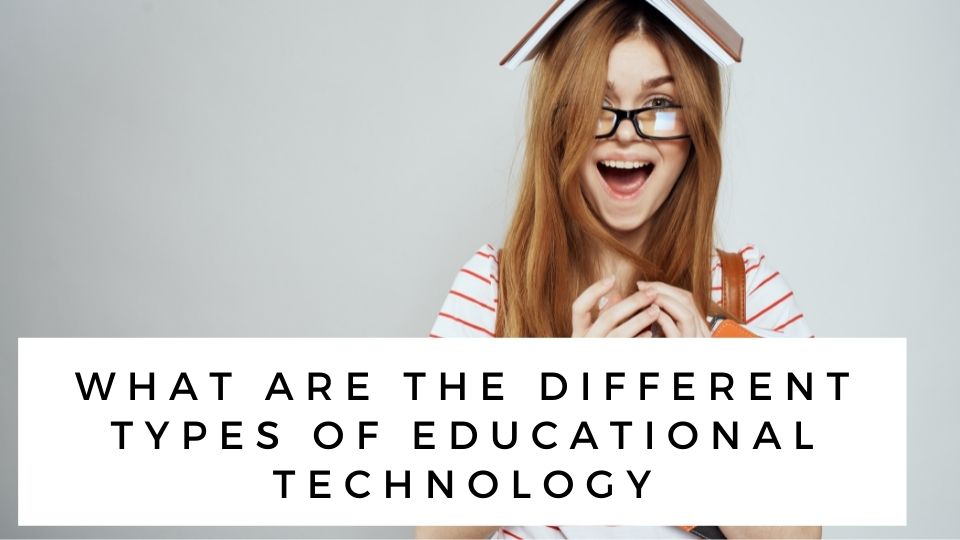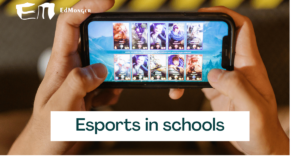Educational Technology (aka EduTech or EdTech) – the New era of learning! Gone are the days when we had to reach the classrooms to learn and gain knowledge. These days, individuals are not primarily dependent on institutions and textbooks since online education has provided them with an excellent opportunity to earn graduate degrees or diplomas without actually attending the colleges.
The new learning environment is encouraging and supporting individuals in attending and participating in different Programmes. Now, Educational Technology is one of the most important forms of learning. It includes a wide range of media – texts, audios, videos, animations, live or in tapes, and the internet. In addition, individuals can learn either through distance learning programs or face-to-face with others.
Also Check – 10 Important Roles Of Technology In Education
Nowadays, there are various new terms like ‘Hybrid Learning’ or ‘Blended Learning’ – which includes both classroom and laptops, ‘Distributed Learning’ – fully online distance learning. Moreover, educational Technology can be self-based, synchronous, or asynchronous. Let’s have a look at different types of educational technology.
Types of Educational Technology
There are three types of educational technology: Synchronous and Asynchronous, Linear learning, and Collaborative Learning. Let’s discuss these educational technology types in detail to get a clear understanding.
1. Synchronous and Asynchronous
Synchronous and Asynchronous are the first of the educational technology types. Due to new inventions being made every day, students can learn in or out of the classroom. Learning can be self-based with the help of various resources available on the internet), synchronous Learning and Asynchronous Learning. Now students can learn online through Distance Learning Programmes, Virtual Classrooms.
Synchronous Learning, as the name, means, ‘existing or occurring simultaneously‘, refers to discussing thoughts and information regarding certain topics with others simultaneously. Some examples are where people are online and working jointly, like face-to-face discussions, chats rooms or virtual classrooms, live teaching and feedback sessions, Skype conversations, etc. Since the students are working in groups, they widen the range of their thinking by listening to others’ thoughts about the same topics. This will also help in learning and gathering more information which will further result in boosting their knowledge.
Asynchronous means ‘not in real-time’. So, Asynchronous Learning is mainly done through blogs, emails, online textbooks, audio/video courses, hypertext documents, wikis, etc. In this type of educational technology, students can learn at their tempo. If they don’t understand the lesson at once, they can read it again without falling behind in the class. Through online courses, students can complete their program while doing internships, work, or sports, or if failed, they can repeat their course without any embarrassment of being in the same class with younger students.
2. Linear Learning
Liner Learning is the second number in educational technology types. Linear Learning is all about Computer-Based Training (CBT), where the information about the Programme is sent to students’ computers, tablets, or smartphones. It looks much like reading an online manual or book. It is frequently used in teaching static processes, like using software or completing mathematical equations. The training is similar to Web-Based Training (sent over the Internet using a web browser).
CBT is different from traditional learning as there is no classroom, textbooks, or manuals. Instead, videos and animation can be included in CBT which will help students understand the topics more precisely. Furthermore, with the help of Computer-Based Training, assessments such as multiple-choice questions, drag-and-drop, and others can be stored easily and recorded using online software and providing feedback/results simultaneously to users. Lastly, users can get the result online in the form of a certificate.
However, there are some challenges, as creating the required CBTs requires significant resources. Sometimes, the CBT may be complex to use. Also, there is no interaction between students or teachers, resulting in no exchange of thoughts and knowledge.
Some examples of CBT are – training people in how to operate heavy equipment (e.g., cranes) and vehicles (e.g., aircraft) or how to work safely in hazardous environments (e.g., oil rigs).
3. Collaborative Learning
Collaborative means ‘to work with another person or group to achieve or do something, so Collaborative Learning is how learning is done in groups by working together. Problem-solving, learning new concepts or completing tasks are, provided in groups of two or more to work together. In this way, individuals can learn through collecting data, and listening to others’ thoughts rather than simply learning the provided resources. This way, they are dependent on teachers (the primary source of skills and knowledge).
In the End… So the gist of the above data is that these different types of educational technology are the new era for learning, where individuals need not attend classes, they can learn anywhere regardless of age. Moreover, they are not only dependent on teachers to proving knowledge, but they can learn through different sources (also learning through the process of finding sources).
By





Pingback: itemprop="name">5 Reasons Why Your Child Should Participate in Model United Nations (MUN)
Pingback: itemprop="name">Importance of equity in education | How to achieve Equity in Education?
Pingback: itemprop="name">Roadmap to transit school education after NEP - Edmonger
Pingback: itemprop="name">What are some examples of Technology in the classroom? - What Type Degree